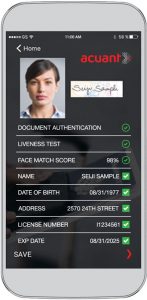ID verification explainer: How does IDV tech work?

ID document validation technologies are tools designed to assist companies and governments in establishing the authenticity of documents.
IDVTs typically play a critical role in preventing the use of fraudulent documents, especially online.
From a regulatory standpoint, IDVTs do not replace forgery experts.
However, they can provide higher levels of accuracy and assurance than the manual checking of documents alone by staff not trained in checking different forms of identity documents.
But how does IDVT work on a more technical level? We break it down here.
Digital identity-focused technologies
Generally speaking, IDVT works through two components: an identity document scanner on one side, and software and a template of IDs on the other.
ID document scanners include specialized passport and ID card reader alongside smartphones, webcams and flatbed scanners.
All these devices capture an image of the document, and some of them can also read chipped documents like biometric passports via RFID and NFC.
Typically, the data extracted from these documents includes full name, date and place of birth, nationality, issuing country or body, expiry date of the document, machine-readable zone (MRZ) code (for passports), document number and photo.
The software checks the security features contained on the ID and compares the image of the document against a template stored in a library.
In the case of passports, the extracted document holder’s data and forgery detection numbers are known as “checksum.” During the verification process, a calculation of the checksum of the extracted data is performed, which is then compared with the original checksum.
Some IDVT systems provide a yes/no response on the authenticity of the IDs, but others report on the document and leave the decision to the human examiner.
And while certain IDVTs can only match ID images against governmental databases, others can also conduct checks against additional data sources (including social media), often via customizable APIs.
Finally, many IDVT systems feature anti-fraud measures, such as biometric live detection or shared secret technologies.
IDVT was introduced in the UK in April to support employers and landlords with Right to Work, Right to Rent, and pre-employment DBS checks.
With thanks to BiometricUpdate. The full story is here: https://www.biometricupdate.com/202208/id-verification-explainer-how-does-idv-tech-work
Find out how The Identity Organisation can help you onboard Digital Identities, Avoid Fraud and Keep Data Secure with AcuantGo

PS: Don’t like to click on redirected buttons? Cut & Paste this link in your browser: https://mailchi.mp/8b5c8353e419/acuantgo-rfi


